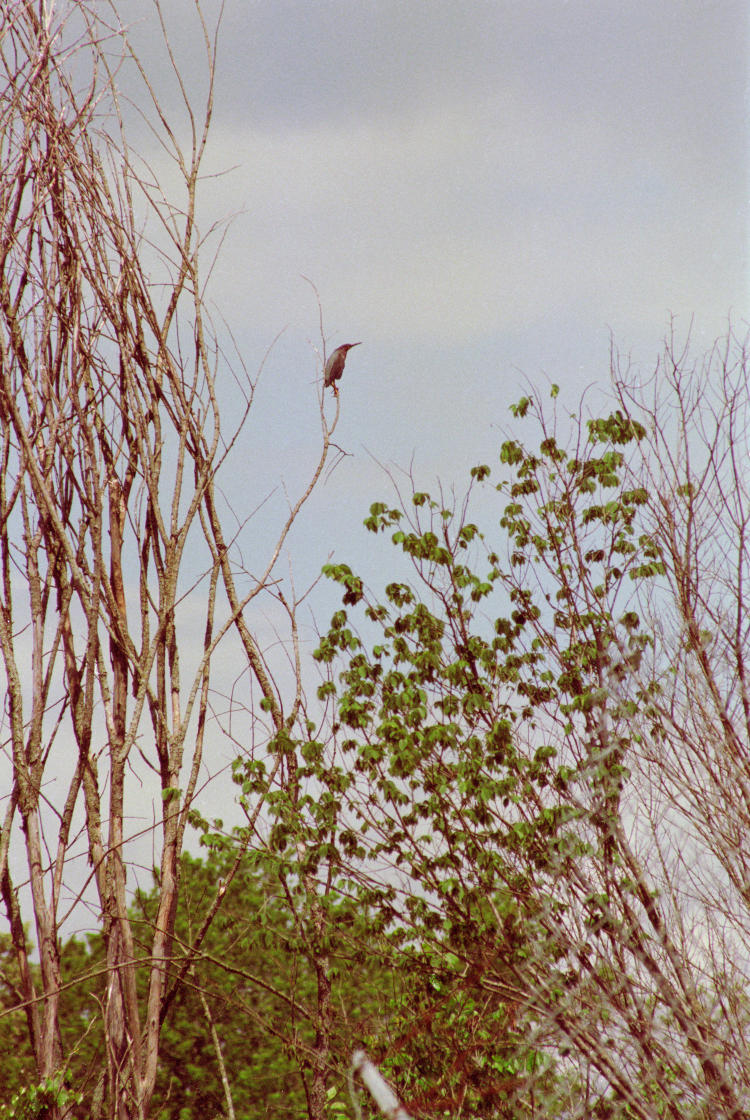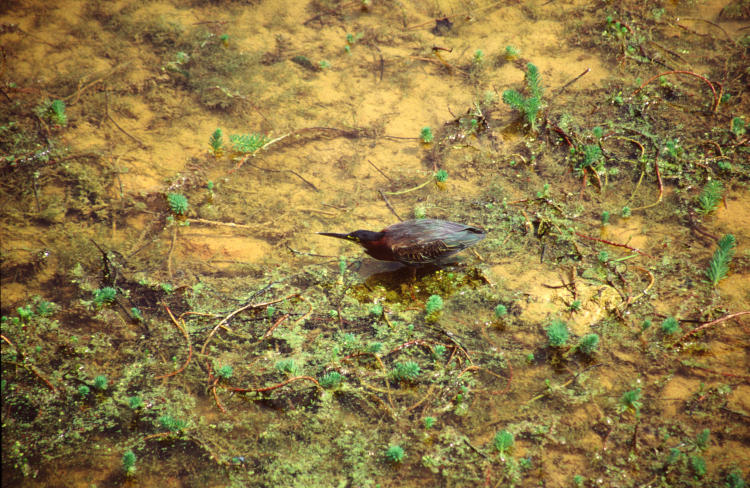
Our opening image this week comes from a negative from 1998, and I could almost give you the exact date – I know that it was on the grounds of the (then) Carnivore Preservation Trust on the one day that I volunteered with them. I had intended to do a lot more, but things changed. Anyway, this was my first photo, and first look, at a green heron (Butorides virescens,) having seen it cruise overhead and recognizing that it wasn’t the size, shape, or flight pattern of anything that I was familiar with. The range was extreme, and even with the Canon 75-300 lens I couldn’t get a decent look until I examined the prints after developing, but I was savvy enough at the time to say, “Hey, that’s a green heron, cool.”
A year or so later, I had done the switch to slide film and was visiting the NC Zoological Park in Asheboro, and from the walkway over a border marshland I spotted another – well, okay, it could be the same one, I can’t say definitively, but I’m going with a different one. I was a bit closer this time, but still using the 75-300.

Little better idea of the plumage now, and I watched for a couple of minutes in the hopes that it would snag a minnow while down there fishing, but no dice. The 75-300 wasn’t the sharpest lens that I’d ever owned, but it didn’t do too badly at that, especially for something that a) I could afford at the time, and b) I could carry around easily. Let’s go in for a closer crop.

That’s not bad resolution, especially handheld at 300mm, so I’m not complaining, but I did eventually trade up, both to the Canon 100-300 L (much older but specifically aimed more towards professional use and surprisingly sharp for such a light lens,) and to the Sigma 170-500, far larger and heavier, and a decent-but-not-great performer. Nowadays, the long lens is the Tamron 150-600 G2, which is even larger and heavier but pretty badass for a non-professional grade lens. This means expensive, but not as expensive as the top offerings in that focal length. And that was what I was using for the next image.

Really, I’ll take any excuse to repost this portrait…
The longer lens of course helped, but what really helped is living very close to a pond where green herons (among others) resided during the summer, so I could visit frequently and spend time out there. Even with that, it took me a few years to get really nice portraits, as well as action sequences. The only other thing that I’ll credit this to is knowing that the species might be around and thus looking carefully at ideal locations, which allowed me to spot this one before I spooked it off. Most of the credit, however, goes to luck and perseverance, so if at any point in time you find yourself lamenting that your shots don’t look as good as someone else’s, recognize that often enough such shots are largely due to putting in the hours. Always work to improve the odds, of course, but know that a lot of success simply comes, “eventually.”



















































